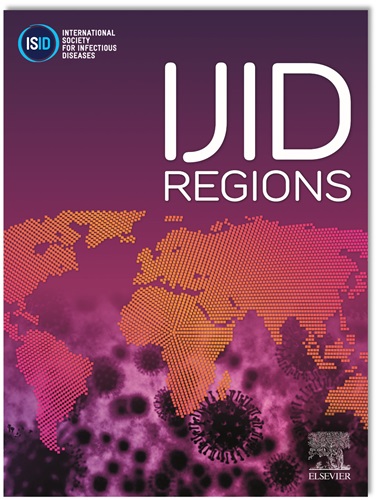Tracking the Evolution and Antibiotic Resistance Patterns of Streptococcus pneumoniae in Indian Adult Populations through High-Throughput Genome Sequencing
IF 4.8
2区 医学
Q1 INFECTIOUS DISEASES
引用次数: 0
Abstract
Introduction
Streptococcus pneumoniae is a leading cause of respiratory infections, levying a substantial health burden, especially on children and the elderly. The introduction of pneumococcal conjugate vaccines (PCVs) and Pneumococcal Polysaccharide Vaccine (PPSV) has reduced invasive pneumococcal disease (IPD) as well as non-invasive diseases in various nations. Yet, there is apprehension that pneumococcal vaccine use could foster the development of drug-resistant S. pneumoniae strains.
Methods
This study analysed 254 S. pneumoniae isolates from Indian adults during 2022-2023. Disease and carriage S. pneumoniae isolates from 5 Indian states were sequenced using Illumina MiSeq.
The genomic analysis was carried out using the GPS Pipeline built specifically for S. pneumoniae. The pipeline performs an initial assessment based on the total bases in reads and the raw reads will be assembled using the Shovill assembler. Samples were further assessed based on assembly, mapping, and taxonomy. Virulence genes were screened using VFDB database.
Result
Out of the 254 isolates, 126 were disease and 128 were carriage isolates. The prevalent serotype in both categories were 19F, 19A, and 9V with a vaccine coverage of 66% and 73.8% to PCV13 and PPSV23 respectively among invasive isolates. A total of 53 distinct GPSCs were identified with GPSC 1, 10 and 6 dominating the population. Of 53 GPSCs, 29 (54 %) were VT lineages, 17 (32 %) were non-VT lineages and 6 (11 %) were lineages (GPSC 10, 6, 23, 9, 16, Novel) with both VT and non-VT isolates. Among sequence types, ST1192, 320 and 236 were common among 89 different STs. 67 isolates had elevated MIC value of ≥4 to penicillin, while 70% were multidrug-resistant (MDR). 34% of the isolates carried pili 1, but 20% had pili 2 and 19% of the isolates carried both pili1 and 2. The virulence genes cpsA, hysA, lytAB, nanAB, pavA, pce, ply, and psaA were present in both invasive and non-invasive strains without clone specificity, which are responsible for colonisation and immune system evasion. Virulence factors, cbpA and pitAB are clonally distributed in GPSC1 while ply and psaA are carried by all strains. Phylogenetic analysis showed, GPSC1 (18.3%), GPSC10 (14.3%), and GPSC6 (11.1%) as predominant invasive clone clusters, whereas GPSC10 (22.7%), GPSC1 (21.9%), and GPSC6 (7.8%) were prominent in commensals.
Discussion
The study underscores the ongoing prevalence of certain serotypes despite vaccination efforts, alarming levels of antimicrobial resistance, and the diverse genetic landscape. These findings emphasize the critical necessity for sustained surveillance and targeted intervention strategies in India.
Conclusion
Overall, these findings highlight the critical importance of continued surveillance efforts to monitor the emergence of new serotypes, track antimicrobial resistance patterns, and inform vaccine strategies tailored to the evolving epidemiology of S. pneumoniae in India.
求助全文
约1分钟内获得全文
求助全文
来源期刊
CiteScore
18.90
自引率
2.40%
发文量
1020
审稿时长
30 days
期刊介绍:
International Journal of Infectious Diseases (IJID)
Publisher: International Society for Infectious Diseases
Publication Frequency: Monthly
Type: Peer-reviewed, Open Access
Scope:
Publishes original clinical and laboratory-based research.
Reports clinical trials, reviews, and some case reports.
Focuses on epidemiology, clinical diagnosis, treatment, and control of infectious diseases.
Emphasizes diseases common in under-resourced countries.

 求助内容:
求助内容: 应助结果提醒方式:
应助结果提醒方式:


